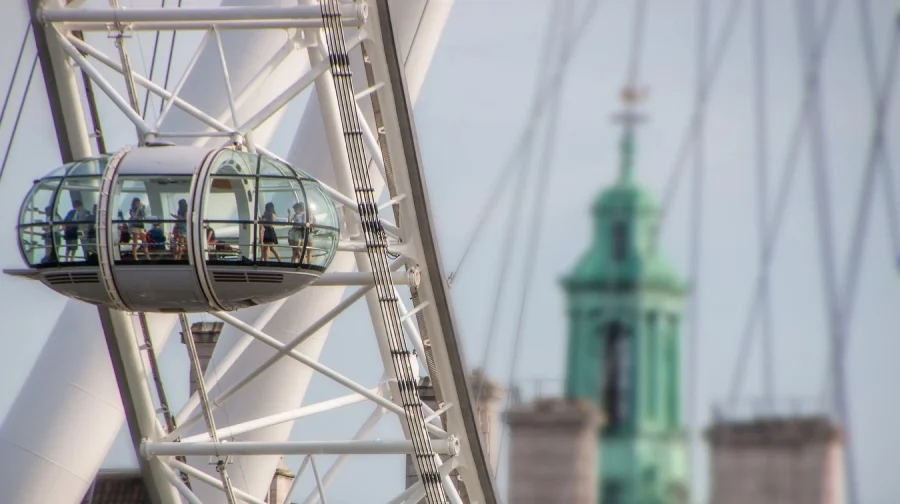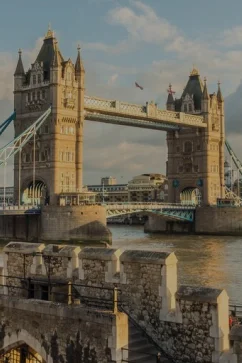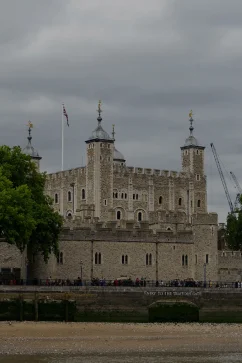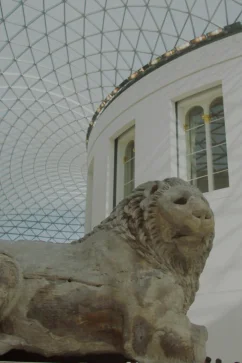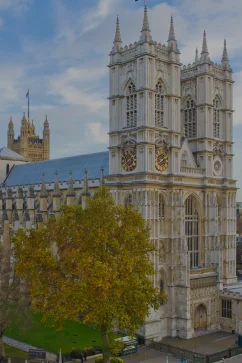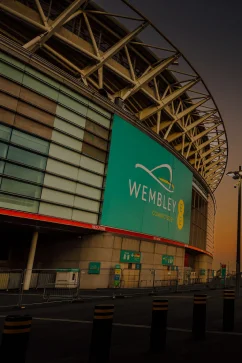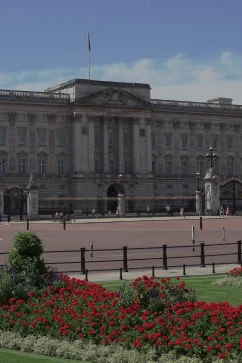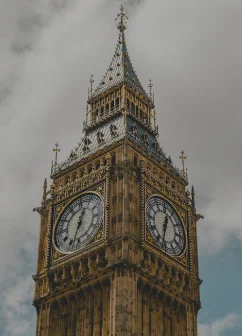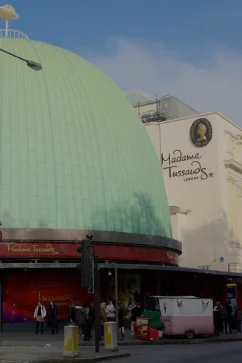London Eye
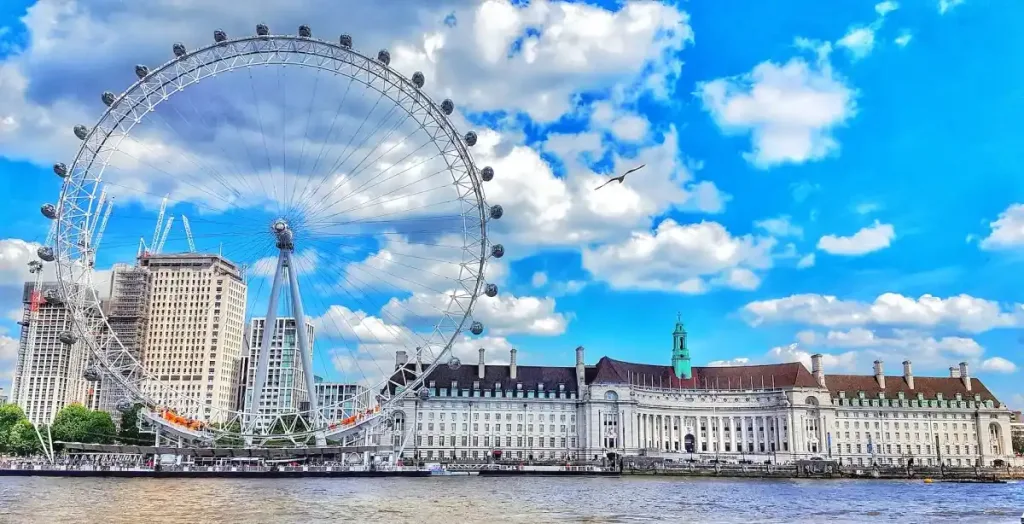
About the London Eye
The London Eye, a giant Ferris wheel and a prominent landmark that stands in the heart of London. This cantilevered observation wheel offers breathtaking panoramic views of the city, making it one of London’s most iconic attractions.
Standing at an impressive height of 135 meters(443 feet), the London Eye provides visitors with an unrivaled vantage point to admire the city’s stunning skyline. It is a marvel of engineering, with 32 sealed and air-conditioned passenger capsules, each representing one of the London boroughs. These capsules offer visitors a breathtaking 360-degree panoramic view of the city.
A unique perspective of London attractions, including the Houses of Parliament, Buckingham Palace, and the River Thames is provided by a leisurely rotation in one of the 32 high-tech glass pods, which takes around 30 minutes. The slow rotation ensures that passengers have ample time to take in the spectacular London views and capture memorable moments. Taking a ride on the London Eye is a must-do for tourists and locals alike.
History of the London Eye
The London Eye history dates back to the late 20th century, a remarkable feat of engineering and a renowned symbol of London. Conceived as a temporary structure to celebrate the new millennium, London Eye construction commenced in 1998. Designed by architects David Marks and Julia Barfield, this giant Ferris wheel was crafted in sections across Europe, eventually reaching its towering height of 135 meters (443 feet).
Officially opened to the public on March 9, 2000, the London Eye was, at the time, the world’s tallest observation wheel, offering 360-degree panoramic views of the city. Initially sponsored by British Airways, it underwent several ownership changes, becoming the Merlin Entertainments London Eye in 2011.
The London Eye has held several records over the years, including being the world’s tallest observation wheel until 2006. It underwent various renovations and upgrades to enhance the visitor experience. This includes the introduction of new 4D cinema experiences and special events such as New Year’s Eve fireworks. Today, the London Eye continues to be a major tourist attraction, used to mark special occasions and celebrations.
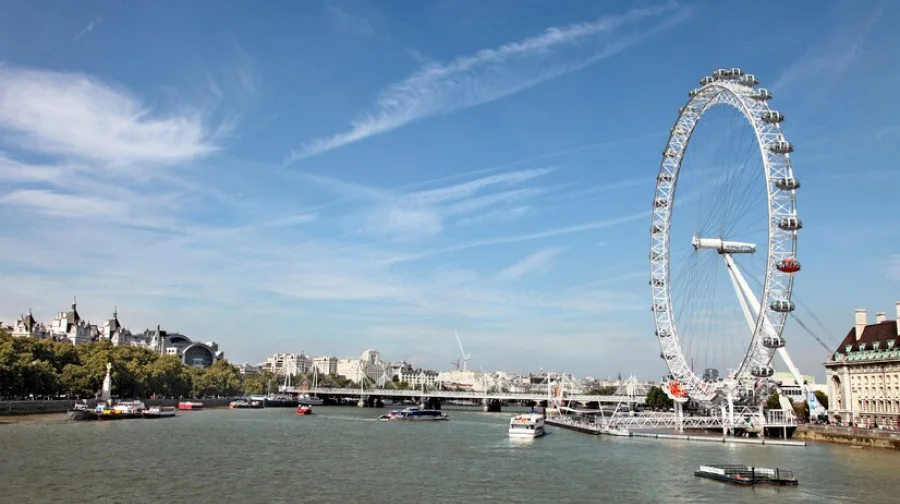
Tips for your visit to London Eye
- London Eye Opening Times: Verify the London Eye’s opening times, as they may vary depending on the season and special events.
- Purchase Tickets in Advance: To skip the lines, book your London Eye tickets online before your visit. This not only saves time but may also offer better pricing options.
- Consider the London Pass: If you plan to explore multiple attractions in London, consider the London Pass, which can include access to the London Eye and other top sights.
- Be Prepared for Heights: The London Eye offers stunning views, but it’s a giant observation wheel, so be prepared for heights. If you’re afraid of heights, the experience may be challenging.
- Dress for the Weather: London’s weather can be unpredictable, so dress appropriately. If you’re planning to visit the London Eye at night, bring a jacket or extra layers.
- Arrive Early: Arriving early not only helps beat the crowds but also allows you to enjoy the London Eye views in daylight, providing a different perspective than nighttime.
- Bring a Camera: Don’t forget your camera or smartphone to capture the breathtaking London views from the observation wheel.
- Avoid Peak Times: If you want to avoid crowds, consider visiting the London Eye during weekdays or outside of peak tourist seasons.
Book Tickets to London Eye
Experience breathtaking views of London from the iconic London Eye. With tickets priced at just £33 for adults and £29 for children aged 2-15 and disabled guests, it’s an affordable adventure for all. Infants even get in for free! Don’t miss this opportunity to see the city from new heights. Book your London eye tickets now and make memories that will last a lifetime.
How to arrive to London Eye
Arriving at the London Eye is easy, as it’s located in a prominent and easily accessible area on the South Bank of the River Thames in central London. Here are several ways to get to the London Eye:
By London Underground (Tube): The nearest Tube station to the London Eye is Charing Cross and Westminster. From there, it’s a short walk to the attraction. Alternatively, you can also use the Waterloo Tube station, which is slightly farther but still within walking distance.
By Bus: Many bus routes serve the area around the London Eye. Buses include 1, 12, 59, 68, 76, 77, 139, 148, 159, 168, 176, 188, 211, 243, 77 and 381, 507, 521.
By Train: If you’re arriving by train, Waterloo Station is the closest major railway station to the London Eye. From there, it’s about a 10-minute walk to the attraction. Alternatively, Charing Cross is about a 15-minute walk.
By Taxi: You can also take a taxi or use a ride-sharing service to reach the London Eye.
By Car: It’s generally not recommended to drive to the London Eye due to limited parking and congestion in central London. However, if you need to drive, there are parking facilities nearby, but they can be expensive and may have limited availability.
